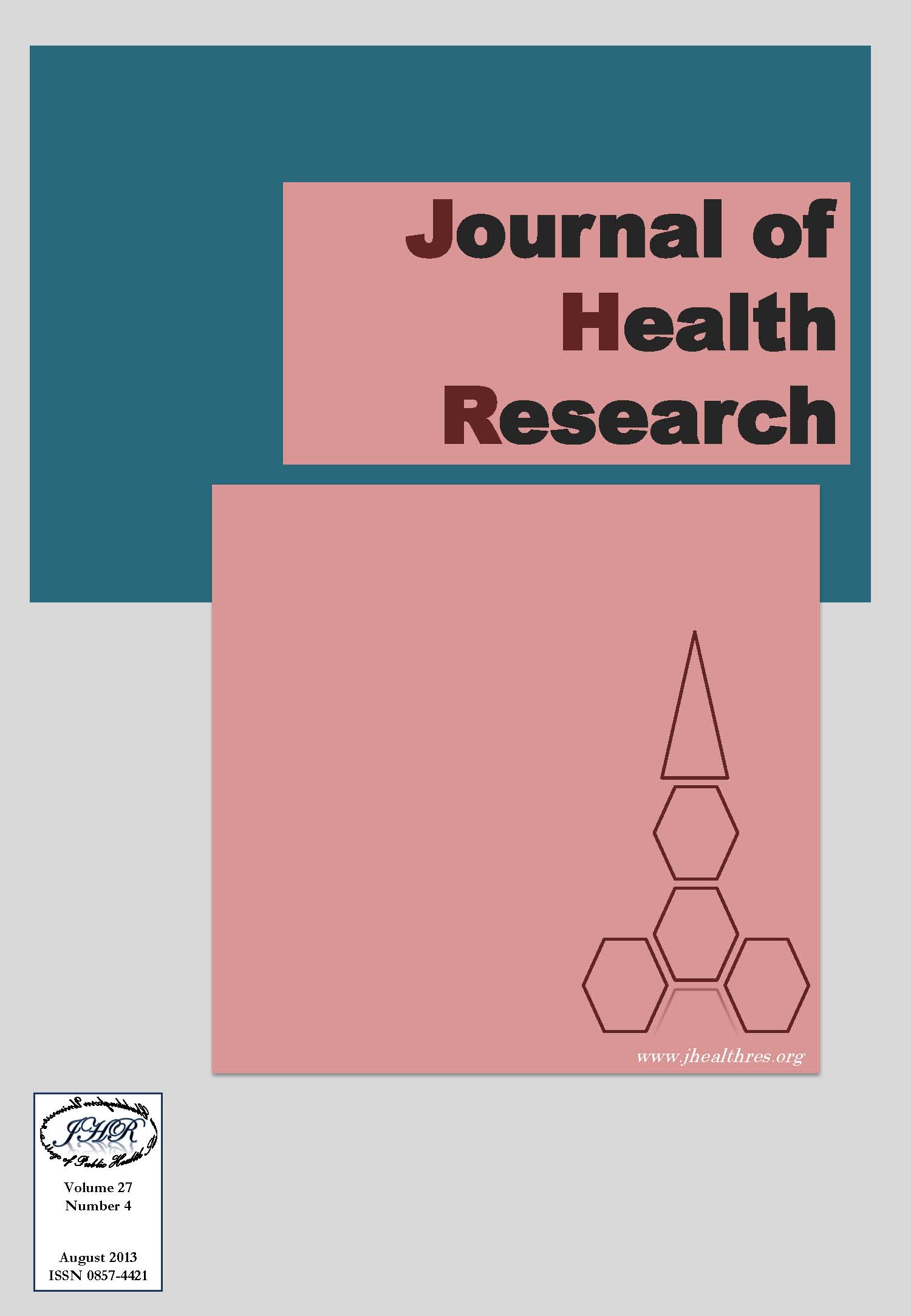Implementation of o Larval and Pupal Source Reduction Program (LSRP) for the Prevention and Control of Dengue Haemorrhagic Fever (DHF) in a Community in Krabi Province, Thailand
Keywords:
Dengue Hemorrhagic Fever (DHF), Larval and Pupael Source Reduction Program (LSRP), Housewife, Pupae Index (PI), Breteau Index (BI)Abstract
Dengue hemorrhagic fever (DHF) is a major public health problem in Krabi Province, Thailand. A quasi-experimental study was designed and conducted to assess the effectiveness of the newly-developed Larval and Pupal Source Reduction Program (LSRP) for the prevention and control of DHF in four villages in Plaipraya District, Krabi Province. Ninety students and ninety housewives were enrolled in this study using a simple random sampling method and then equally divided into 2 experimental and 2 control groups. The experimental groups were trained through a 3-day LSRP course in the village. Quantitative data from questionnaires were collected before and after the experiment. Knowledge, perceived susceptibility, self-efficacy, and regular larval survey practices were measured. Container Index (CI), House Index (HI), Breteau Index (BI), and Pupae Index (PI) as larval indices were used to measure the program outcomes. Monthly meetings of the groups of participants in the selected villages were used to share experiences. Repeated measure analysis of variance within-subjects factors was used to evaluate the differences in all dependent variables: knowledge, perceived susceptibility, self-efficacy, behavioral practices, HI, CI, BI, and PI, for each group, for four follow-up times of three-month assessment including the baseline session. The results revealed that 51.1% of the student group was female, with an average age of 13.62, whereas for the housewife group, it was 37.58 years. The data analysis of the pre-intervention surveys showed that there were no significant differences in the means for knowledge, perceived susceptibility, self-efficacy, behavioral practice in DHF prevention and control, HI, CI, BI, and PI (p>0.05) for both experimental groups. After the implementation of LSRP for three months, the results indicated that the knowledge, perceived susceptibility, self-efficacy, and behavioral practices in the experimental village for both students and housewives were significantly higher (p-value =0 .001) for all four outcome variables compared to the control village. The CI, BI, and PI determined after the implementation of LSRP in the housewife group were significantly lower, with p-values of 0.005, 0.005, and 0.05, respectively, than those in the control group, and there were no significant differences in HI between the groups. The CI and PI in the student group were significantly lower (p-values of 0.037 and 0.004 respectively), than those for the control groups, while there was no significant differences in HI and BI between the groups. Significant improvement in knowledge, perception, self-efficacy, and larval survey practice scores were achieved for the experimental groups of both students and housewives. CI, BI, and PI decreased and were lower than for the baseline data. This study shows that the LSRP appeared to be effective in improving knowledge, perception, self-efficacy, and larval survey practice scores, which, in turn, decreased the CI, BI, and PI. The results of this study suggest that public health intervention programs like LSRP could improve DHF prevention and control in Thai villages.







